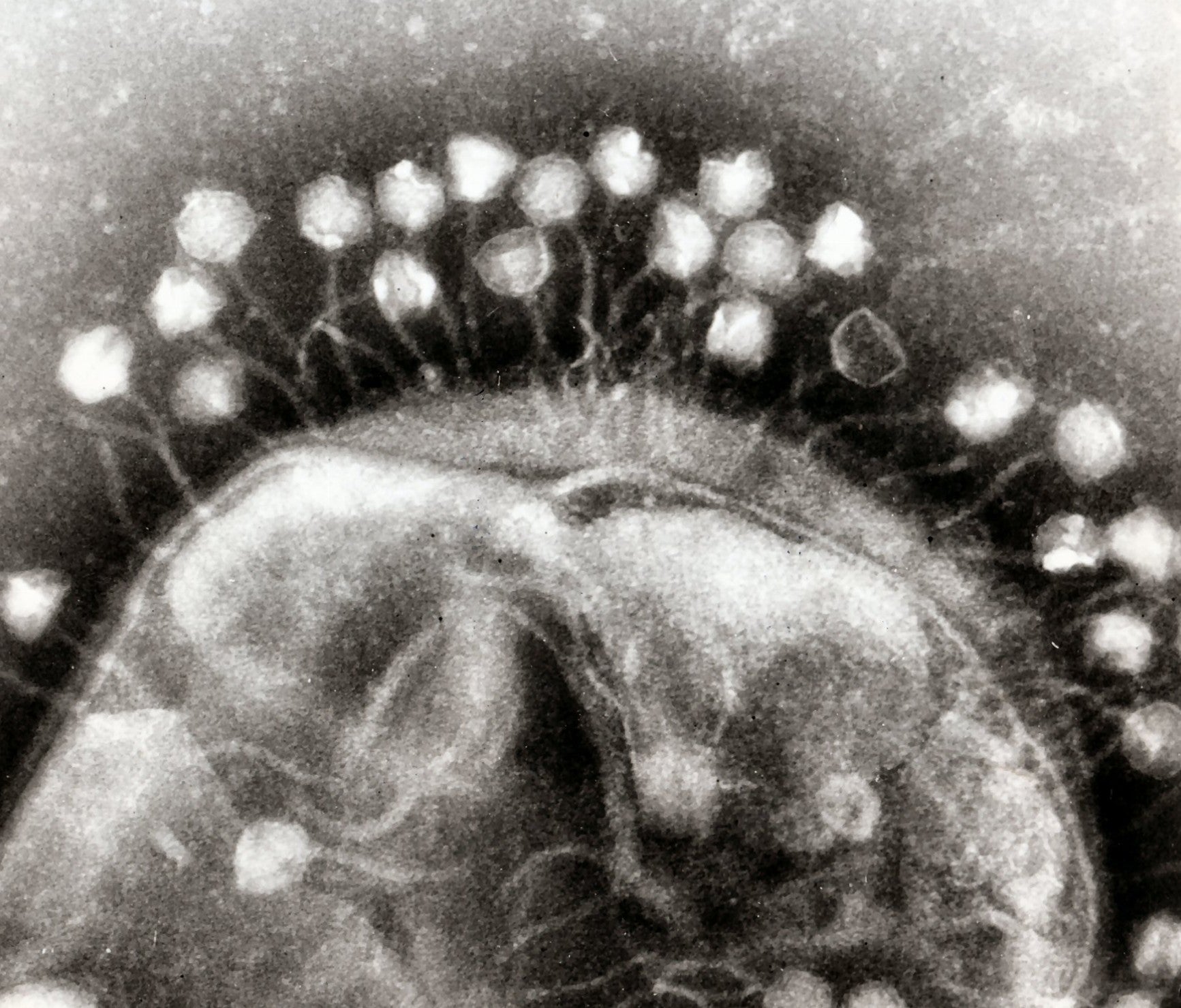By Briga Mullin, Biochemistry and Molecular Biology, ’15
The human body’s immune system has been developed to successfully battle foreign invaders including bacteria, parasites, and viruses. Immunotherapy is the idea that the power of the immune system can be utilized against diseases such as cancer. Typically, the immune system does not harm the body’s own cells, preventing it from being extremely effective against cancer. However with different medical interventions to strengthen the body’s immune response, it is possible to get an effective treatment (Cancer Immunotherapy 2015).
A unique and exciting branch of immunotherapy involves oncolytic viruses, genetically modified viruses that are used to infect tumor cells and fight cancer (Vile, Ando, and Kirn 2002). One example of an oncolytic virus is Oncolytic Polio/Rhinovirus Recombinant (PVS-RIPO), a genetic combination of poliovirus and a strain of the common cold. Currently the PVS-RIPO virus is being tested in clinical trials at Duke University against recurrent glioblastoma brain tumors (Pelley 2015). Glioblastoma tumors are extremely fast growing, malignant, and often are difficult to eradicate with traditional therapies (Pelley 2015). It is hoped that early success using PVS-RIPO against glioblastoma is indicative of future success against this cancer as well as many others (Pelley 2015).
While polio is only one of several types of viral therapies being pursued, it is promising for several reasons. Important factors to consider in a virotherapy drug are how to prevent the virus from affecting healthy cells, and how to ensure the virus successfully invades and replicates in cancer cells (Vile, R., Ando, D., Kirn, D. 2002). The genetically modified polio virus is highly effective because it meets both of these criteria (Desjardins et. al., 2014). PVS-RIPO recognizes a tumor antigen, a signal molecule expressed on the surface of most malignant tumor cells, allowing the virus to bind and enter into tumor cells. This receptor is not on healthy cells, preventing healthy cells from being infected by the virus. When cells are attacked by either cancer or a virus, normal defensive mechanisms are disabled allowing the cancer or virus to proliferate. Without these mechanisms cells cannot recognize the abnormalities and instigating pathways of apoptosis, programmed cell death, that would normally occur (Vile, R., Ando, D., Kirn, D. 2002). PVS-RIPO virus is a debilitated form of polio, engineered to grow successfully only in cells where cancer has already disabled normal cell defense mechanisms. Because its ability to stop cell defense mechanisms has been removed, the modified form of polio in PVSRIPO is unable to survive independently in non-cancerous cells (Desjardins et. al., 2014).
While viral infection of the tumor cells is key to the success of this treatment, it is not actually the PVS-RIPO virus that kills the cells. Researchers hypothesize the real mechanism of treatment is that the immune system recognizes the polio viral infection and attacks the body’s own cancer cells in an effort to remove the foreign virus inside the tumor. Once the body’s immune system is reprogrammed to recognize the tumor cells as foreign, it destroys them and effectively removes the cancer (Targeting Cancer…2015).
This theory is producing results in the clinical trials of PVS-RIPO at Duke University. The stage 1 clinical trial has so far included 22 patients, and while 11 have died, 11 have had successful reduction of their tumor and currently 3 are cancer free (Pelley 2015). The level of success in this stage 1 trial is very promising, especially because the treatment involves nothing more than an injection of PVS-RIPO directly into the tumor. This is obviously preferable to cycles of chemotherapy and radiation which come with serious negative side effects (Pelley 2015). There are some side effects to the viral treatment in cases when the tumor swells in response to the attack by immune system. Patients currently in the study demonstrate slow shrinkage of their tumor over time as the immune system destroys the cancer (Desjardins et. al., 2014).
Because of these results, this particular virotherapy is currently receiving huge attention and is being considered by the FDA for “breakthrough” status which would allow much more rapid and accessible spread of the treatment (Pelley 2015). Hopefully these attentions will facilitate further research into virotherapy for more than just glioblastoma treatment. For example, a similar approach being studied is the use of a modified herpes virus to treat late stage melanoma (Keller 2014). The mechanism for this virotherapy involves the herpes virus invading and lysing tumor cells, as well as stimulating immune cells to attack circulating tumor cells throughout the body (Keller 2014). More research is needed both in the polio and herpes virotherapy techniques, but hopefully the future will hold many more cancer treatments like them, where the advances of molecular biology and biochemistry create cancer treatments that kill tumors without the damage and side effects of chemotherapy and radiation.
Works Cited
Cancer Immunotherapy: Cancer Vaccines. 2014. American Cancer Society. [accessed 2015 April 7] http://www.cancer.org/treatment/treatmentsandsideeffects/treatmenttypes/immunotherapy/index
Desjardins, A. et. al. 2014. Intratumoral administration of an Oncolytic Polio/Rhinovirus Recombinant (PVSRIPO) in recurrent glioblastoma (GBM): Preliminary results of the Phase I clinical trial. Cancer Research, 74: CT416
Keller, Daniel M., PhD. 2014. Melanoma: Engineered Herpes Virus Effective in Treating Local and Distant Lesions. Oncology Times, 36(4): 29-31.
Pelley, S. 2015 March 29. Killing Cancer. [Television Broadcast]. Radutzky, M. and Cetta, D. (producers). 60 minutes. New York, CBS Broadcasting.
Targeting Cancer with Genetically Engineered Poliovirus (PVS-RIPO). 2015. Duke University Medical Center. [accessed 2015 April 7] http://www.cancer.duke.edu/btc/modules/Research3/index.php?id=41
Vile, R., Ando, D., Kirn, D. 2002. The oncolytic virotherapy treatment platform for cancer: Unique biological and biosafety points to consider. Cancer Gene Therapy, 9:1062-1067

